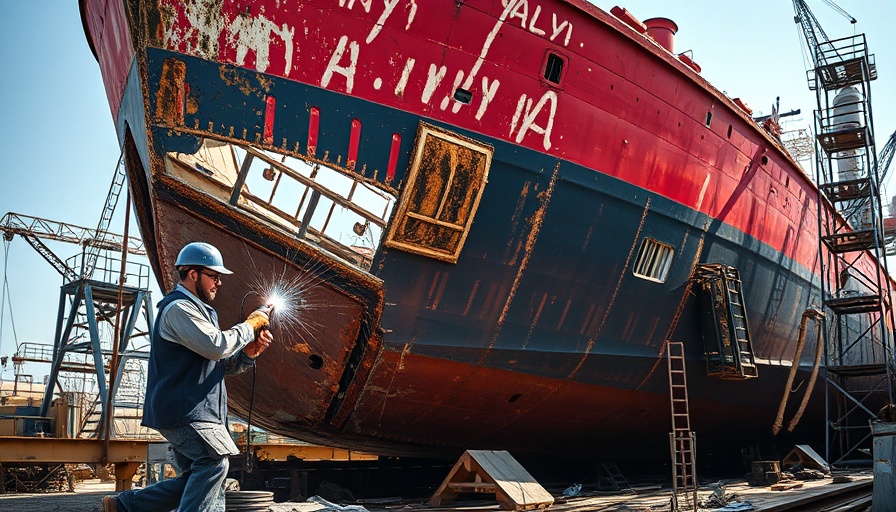
What Happens to Ships When They Retire?
As large vessels reach the end of their operational life, their fate is a critical point of focus in the industry, particularly concerning sustainability and environmental impact. Approximately 1,800 ships are decommissioned each year, with this trend expected to rise as the global fleet ages—many of these ships exceeding 15 years old. While the recycling of old ships often leads to recovery and reuse of valuable materials, the processes involved pose significant challenges that need to be addressed.
How Ship Recycling Works: Insights into the Process
Once a ship becomes obsolete, it is typically sold to cash buyers in hubs like Dubai or Hong Kong, who then transfer ownership to ship breaking yards. About 85-90% of ships are dismantled in South Asia, where a method known as "beaching" involves grounding the vessels on tidal flats. Workers manually scrap the ships by hand, a process fraught with safety hazards. In contrast, methods employed in Europe and Turkey are significantly safer, utilizing dry docks and cranes for dismantling, yet these methods reclaim only a small portion of the global scrap market.
Environmental Concerns: The Dark Side of Shipbreaking
The ship recycling process, while essential for material recovery, carries severe environmental risks, including hazardous waste discharge into marine ecosystems. Substances such as asbestos and heavy metals can leach into the environment, representing a significant health hazard for workers and nearby communities. Since 2009, more than 470 workers have tragically lost their lives in accidents at shipbreaking yards, highlighting the urgent need for enhanced safety measures and better working conditions.
Economic Impacts: Who Profits?
Despite the high risks involved, the shipbreaking industry is vital for many local economies in South Asia. Poorer nations benefit from the influx of jobs linked to dismantling ships, which in turn fuels the steel industry and secondary businesses. Recycling steel from old ships can save approximately 1.5 tonnes of CO2 emissions per ton produced, thus contributing positively to global climate goals. However, there are calls for fair compensation for these nations given the environmental toll they bear while dismantling vessels owned primarily by wealthier countries.
The Role of International Regulations in Ship Recycling
Regulations around ship recycling are slowly evolving. The Hong Kong Convention aims to impose stricter controls on ship dismantling practices to safeguard both workers and the environment. European regulations already mandate environmental monitoring and safe handling of hazardous materials, yet compliance varies globally. The shift towards a stricter regulatory framework may significantly mitigate the environmental footprint of the shipbreaking industry while ensuring fair labor practices.
Future Predictions: Exploring Safer Alternatives
Looking ahead, innovations in ship recycling processes may provide greener, more sustainable options. Emerging technologies promise to enhance safety and efficiency in shipbreaking, reducing the environmental burden even further. For instance, initiatives focused on dismantling ships in controlled environments could significantly lessen pollutant discharge, provide stable employment, and promote sustainable development goals.
Takeaway: Making Wise Choices for a Sustainable Future
As eco-conscious consumers, our decisions can impact this industry. Supporting regulations that promote sustainable practices in shipbreaking and advocating for better workplace safety are important steps in reducing the industry's carbon footprint and promoting a circular economy. Therefore, we can make informed decisions to buy products made with upcycled materials, support ethical brands, and encourage legislative changes that prioritize the health of both workers and the planet.
In an era where environmental awareness is more crucial than ever, understanding the lifecycle of our resources, from shipbuilding to recycling, is essential. The path towards a more sustainable future hinges not only on technological advancements but on our collective commitment to responsible consumption and resource management.
 Add Row
Add Row  Add
Add 



Write A Comment